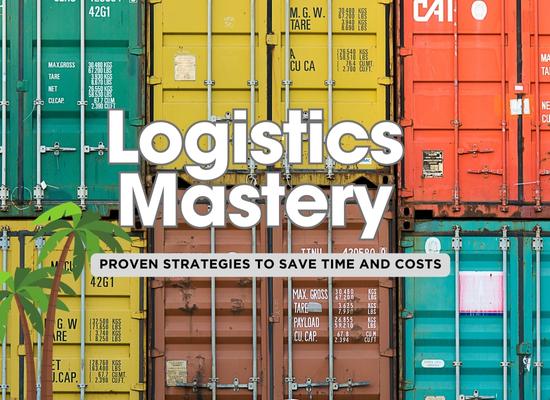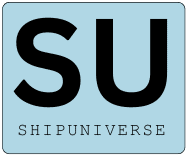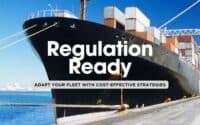20 Smart Hacks to Save Time and Money in Maritime Supply Chain and Logistics

In the fast-paced and cost-intensive world of maritime logistics, every decision counts. For shipowners, optimizing operations isn’t just about staying competitive—it’s about securing profitability and future sustainability. From cutting-edge technologies to strategic operational tweaks, understanding and implementing the right practices can lead to massive savings in both time and money. Here are twenty proven strategies to help you achieve these goals:

1️⃣ Optimize Transportation Modes and Routes 🗺️
Rationale:
Selecting the most efficient transportation modes and routes is critical for reducing costs and minimizing transit times. By leveraging technology and data, shipowners can ensure their vessels are traveling on the most cost-effective and timely paths.
Key Benefits:
- Fuel Savings: Optimized routes reduce fuel consumption, which can account for up to 60% of operational costs.
- Faster Transit: Shorter, more efficient routes ensure on-time deliveries and reduce demurrage charges.
- Improved Asset Utilization: Less time spent in transit means more availability for other voyages.
Implementation Tips:
- Use Route Optimization Software: Tools like SeaRates provide real-time analytics to plan cost-efficient and weather-safe routes.
- Incorporate Multimodal Solutions: Consider integrating rail or truck transportation for the last mile to reduce overall transit times.
- Collaborate with Experts: Work with logistics consultants to analyze and refine transportation strategies.
Potential Savings:
- Fuel Costs: Up to 15-30% savings depending on the route and vessel type.
- Operational Downtime: Reduce time spent idle or in congested routes by 20-40%.
2️⃣ Implement Inventory Management Systems 📦
Rationale:
Efficient inventory management prevents issues like overstocking, stockouts, and unnecessary storage costs. For shipowners dealing with large-scale cargo operations, advanced inventory systems are essential to balancing supply and demand.
Key Benefits:
- Reduced Holding Costs: Avoid overstocking and the associated warehousing fees.
- Minimized Stockouts: Ensure cargo is always available when needed, reducing missed revenue opportunities.
- Enhanced Order Accuracy: Automated systems reduce human error in inventory tracking and management.
Implementation Tips:
- Adopt Inventory Tracking Technology: Use tools like RFID and barcode systems to monitor cargo in real-time.
- Leverage Demand Forecasting: Implement AI-driven systems to predict demand and optimize inventory levels.
- Integrate with Supply Chain Systems: Ensure your inventory management is connected to broader logistics software for seamless operation.
Potential Savings:
- Storage Costs: Reduce warehousing fees by up to 25%.
- Operational Efficiency: Improve inventory turnover rates by 15-20%.
3️⃣ Adopt Lean Management Principles 🛠️
Rationale:
Lean management focuses on eliminating waste and optimizing processes, leading to enhanced efficiency and reduced operational costs. By identifying and removing non-value-adding activities, shipowners can streamline operations and improve service quality.
Key Benefits:
- Cost Reduction: Minimizing waste directly lowers operational expenses.
- Improved Efficiency: Streamlined processes result in faster turnaround times and better resource utilization.
- Enhanced Quality: Continuous improvement fosters higher service standards and customer satisfaction.
Implementation Tips:
- Value Stream Mapping: Analyze each step of your operations to identify and eliminate inefficiencies.
- 5S Methodology: Implement Sort, Set in order, Shine, Standardize, and Sustain to organize and maintain efficient workflows.
- Continuous Improvement: Encourage a culture where employees regularly seek and suggest improvements.
Potential Savings:
- Operational Costs: Potential reduction of up to 15-20% through waste elimination.
- Process Efficiency: Improvements leading to 25-30% faster turnaround times.
4️⃣ Leverage Third-Party Logistics (3PL) Providers 🤝
Rationale:
Partnering with Third-Party Logistics providers allows shipowners to outsource logistics functions, tapping into specialized expertise, advanced technologies, and established networks. This collaboration can lead to optimized operations and cost savings.
Key Benefits:
- Cost Savings: Reduce expenses related to warehousing, transportation, and staffing by leveraging 3PL resources.
- Scalability: Easily adjust logistics capabilities to match demand fluctuations without significant capital investment.
- Access to Expertise: Benefit from the 3PL’s industry knowledge and advanced technologies to enhance supply chain efficiency.
Implementation Tips:
- Select the Right Partner: Choose a 3PL provider with a proven track record and services aligned with your specific needs.
- Define Clear Agreements: Establish transparent contracts outlining expectations, responsibilities, and performance metrics.
- Maintain Communication: Regularly engage with your 3PL partner to ensure alignment and address any operational challenges promptly.
Potential Savings:
- Logistics Costs: Reduction of up to 10-15% by outsourcing to specialized providers.
- Capital Expenditure: Avoidance of significant investments in infrastructure and technology.
5️⃣ Invest in Digital Transformation 💻
Rationale:
Integrating digital technologies such as Artificial Intelligence (AI), Blockchain, and the Internet of Things (IoT) into maritime operations enhances visibility, accuracy, and decision-making across the supply chain. This digital shift not only streamlines processes but also fosters a more resilient and responsive logistics framework.
Key Benefits:
- Enhanced Operational Efficiency: Digital tools facilitate real-time monitoring and management of vessel performance, cargo status, and route optimization, leading to reduced downtime and operational costs.
- Improved Communication: Digital platforms enable seamless information exchange among stakeholders, including shipping lines, port authorities, and customers, ensuring coordinated and efficient operations.
- Predictive Maintenance: IoT sensors and AI analytics allow for the anticipation of maintenance needs, preventing unexpected breakdowns and extending the lifespan of assets.
Implementation Tips:
- Adopt Integrated Digital Platforms: Implement systems that consolidate various operational aspects, providing a unified interface for monitoring and decision-making.
- Invest in Cybersecurity: As digitalization increases, so does the risk of cyber threats. Ensuring robust cybersecurity measures is essential to protect sensitive data and maintain operational integrity.
- Provide Training Programs: Equip your workforce with the necessary skills to effectively utilize new digital tools, ensuring a smooth transition and maximizing the benefits of digital transformation.
Potential Savings:
- Operational Costs: Digitalization can lead to a reduction in operational expenses by up to 15%, attributed to improved efficiency and resource management.
- Maintenance Expenses: Predictive maintenance facilitated by digital tools can decrease maintenance costs by approximately 10%, through timely interventions and reduced equipment failures.
6️⃣ Optimize Packaging for Cost Efficiency 📦
Rationale:
Optimizing packaging involves designing and utilizing packaging solutions that minimize size and weight without compromising the safety and integrity of the cargo. This practice not only reduces shipping costs but also contributes to environmental sustainability by decreasing material usage and waste.
Key Benefits:
- Reduced Shipping Costs: Smaller and lighter packages occupy less space and weight, leading to lower transportation expenses.
- Minimized Material Costs: Efficient packaging designs use fewer materials, cutting down on packaging expenses.
- Environmental Sustainability: Less packaging material translates to reduced waste, aligning with global sustainability goals and enhancing corporate social responsibility profiles.
Implementation Tips:
- Conduct Packaging Audits: Regularly assess packaging processes to identify opportunities for size and material reduction without compromising product protection.
- Utilize Advanced Packaging Materials: Adopt materials that offer strength and durability at reduced weights, such as biodegradable or recyclable options.
- Leverage Technology: Use software tools to simulate and test packaging designs, ensuring optimal balance between protection and efficiency.
Potential Savings:
- Shipping Expenses: Optimized packaging can lead to a reduction in shipping costs by up to 20%, due to decreased dimensional weight and improved space utilization.
- Material Costs: Efficient packaging strategies can lower material expenses by approximately 15%, through the use of fewer and more cost-effective materials.
7️⃣ Develop a Strong Procurement Strategy 🛒
Rationale:
Effective procurement practices are essential for ensuring cost-effective sourcing and fostering strong supplier relationships. In the marine and offshore sector, procurement costs can be substantial due to the scale of operations. Implementing strategic procurement methods helps in optimizing efficiency, reducing costs, and ensuring timely delivery of goods and services.
Key Benefits:
- Cost Reduction: Strategic procurement can significantly lower operating costs by optimizing resource utilization.
- Supply Chain Excellence: Establishing robust procurement processes contributes to a more resilient and efficient supply chain.
- Risk Mitigation: Diversifying suppliers and fostering strategic partnerships help mitigate risks like supply chain disruptions.
Implementation Tips:
- Strategic Supplier Relationship Management: Build and maintain strong relationships with key suppliers to ensure reliability and quality.
- Regular Market Analysis: Continuously assess market trends to identify cost-saving opportunities and potential risks.
- Leverage Technology: Utilize digital tools to streamline procurement processes and enhance decision-making.
Potential Savings:
- Operational Costs: Implementing effective procurement strategies can lead to significant reductions in operating expenses.
- Efficiency Gains: Optimized procurement processes contribute to smoother operations and timely project completion.
8️⃣ Implement Energy Management Systems ⚡
Rationale:
Monitoring and optimizing energy use through structured energy management systems (EnMS) reduces costs and supports sustainability goals. Implementing standards such as ISO 50001 helps organizations systematically track, analyze, and improve energy efficiency.
Key Benefits:
- Cost Savings: Improved energy efficiency directly reduces fuel consumption and operational costs.
- Regulatory Compliance: Adhering to energy management standards ensures compliance with environmental regulations.
- Environmental Impact: Enhanced energy efficiency contributes to lower greenhouse gas emissions, supporting global sustainability efforts.
Implementation Tips:
- Conduct Energy Audits: Regularly assess energy consumption patterns to identify areas for improvement.
- Set Clear Objectives: Establish measurable energy performance targets aligned with organizational goals.
- Continuous Monitoring: Implement systems to continuously monitor energy usage and adjust strategies as needed.
Potential Savings:
- Fuel Costs: Effective energy management can lead to substantial reductions in fuel expenses.
- Maintenance Expenses: Optimized energy use can decrease wear and tear on equipment, lowering maintenance costs.
9️⃣ Utilize Shipment Consolidation 📦
Rationale:
Combining smaller shipments into larger ones, known as shipment consolidation, maximizes container utilization and reduces transportation costs. This approach allows multiple shippers to share space in a single container, leading to cost savings and improved efficiency.
Key Benefits:
- Cost Savings: By consolidating shipments, shippers share transportation costs, resulting in lower expenses per unit.
- Reduced Damage Risk: Fewer handling points decrease the likelihood of damage to goods during transit.
- Environmental Impact: Consolidation leads to fewer shipments, reducing fuel consumption and lowering carbon emissions.
Implementation Tips:
- Partner with Consolidation Services: Collaborate with logistics providers that offer consolidation services to efficiently combine shipments.
- Plan Shipments Strategically: Schedule shipments to align with consolidation opportunities, ensuring timely and cost-effective delivery.
- Leverage Technology: Use digital platforms to coordinate and track consolidated shipments, enhancing visibility and management.
Potential Savings:
- Transportation Costs: Businesses can achieve significant reductions in shipping expenses through effective consolidation.
- Operational Efficiency: Improved container utilization leads to more streamlined operations and reduced logistical complexities.
🔟 Streamline Customs Processes 🛃
Rationale:
Efficient customs procedures prevent delays and avoid additional costs. Streamlining these processes ensures that goods move swiftly across borders, maintaining the flow of the supply chain and reducing the risk of penalties due to non-compliance.
Key Benefits:
- Minimized Delays: Simplified customs clearance accelerates the movement of goods, reducing lead times.
- Cost Reduction: Efficient processes lower the likelihood of incurring demurrage fees and storage costs due to delays.
- Regulatory Compliance: Adhering to customs regulations mitigates the risk of fines and enhances the company’s reputation.
Implementation Tips:
- Automate Documentation: Utilize digital tools to prepare and submit accurate customs documentation, reducing errors and processing time.
- Stay Informed: Keep abreast of changes in customs regulations to ensure compliance and adapt processes accordingly.
- Engage Customs Brokers: Work with experienced brokers to navigate complex customs requirements and facilitate smooth clearance.
Potential Savings:
- Time Savings: Streamlined customs procedures can significantly reduce clearance times, enhancing overall supply chain efficiency.
- Financial Savings: Avoidance of penalties and reduced storage fees contribute to lower operational costs.
1️⃣1️⃣ Adopt Real-Time Tracking 📡
Rationale:
Implementing real-time tracking systems provides continuous visibility into shipment locations and statuses, enabling better coordination and responsiveness throughout the supply chain.
Key Benefits:
- Enhanced Visibility: Real-time data allows for precise monitoring of cargo, facilitating proactive decision-making.
- Improved Customer Satisfaction: Providing customers with accurate, up-to-date information on shipment status builds trust and transparency.
- Operational Efficiency: Immediate access to shipment information helps in optimizing routes and reducing delays.
Implementation Tips:
- Invest in Advanced Tracking Technologies: Utilize GPS and IoT devices to monitor shipments continuously.
- Integrate Systems: Ensure tracking solutions are compatible with existing logistics and management systems for seamless data flow.
- Train Personnel: Educate staff on effectively using tracking tools to maximize their benefits.
Potential Savings:
- Reduced Operational Costs: Enhanced tracking can lead to more efficient resource utilization, lowering expenses.
- Minimized Delays: Proactive management of shipments reduces the risk of costly delays and associated penalties.
1️⃣2️⃣ Negotiate Shipping Rates 💬
Rationale:
Regularly reviewing and negotiating shipping rates with carriers ensures that shipowners secure competitive pricing, directly impacting the bottom line.
Key Benefits:
- Cost Savings: Effective negotiations can lead to significant reductions in shipping expenses.
- Improved Service Terms: Negotiations may also yield better service agreements, such as flexible scheduling or additional services.
- Strengthened Partnerships: Engaging in open discussions fosters stronger relationships with carriers, leading to more reliable service.
Implementation Tips:
- Analyze Market Rates: Stay informed about current market conditions to benchmark and negotiate favorable rates.
- Leverage Volume: Use shipment volume as a bargaining tool; higher volumes can often secure better rates.
- Consider Long-Term Contracts: Establishing long-term agreements can provide rate stability and potential discounts.
Potential Savings:
- Freight Costs: Negotiated rates can reduce freight expenses by a significant margin, depending on market conditions and negotiation effectiveness.
- Operational Predictability: Stable rates contribute to more accurate budgeting and financial planning.
1️⃣3️⃣ Invest in Employee Training 🎓
Rationale:
Skilled employees are pivotal in improving operational efficiency and reducing errors. Comprehensive training ensures that personnel are well-versed in safety protocols, technological advancements, and industry best practices, leading to safer and more efficient operations.
Key Benefits:
- Enhanced Safety: Proper training reduces the likelihood of accidents and incidents, promoting a safer working environment.
- Operational Efficiency: Well-trained staff can perform tasks more effectively, minimizing errors and downtime.
- Regulatory Compliance: Continuous training ensures adherence to international maritime regulations and standards.
Implementation Tips:
- Regular Training Programs: Conduct ongoing training sessions to keep employees updated on the latest industry developments and safety protocols.
- Utilize Certified Training Providers: Engage with accredited institutions to provide quality training tailored to specific maritime roles.
- Assess and Update Training Needs: Regularly evaluate training programs to address emerging challenges and incorporate new technologies.
Potential Savings:
- Reduced Accident Costs: Lower incidence of workplace accidents leads to savings on medical expenses and legal liabilities.
- Improved Productivity: Efficient operations result in cost savings and higher profitability.
1️⃣4️⃣ Monitor and Adapt to Market Trends 📈
Rationale:
Staying informed about market changes allows shipowners to proactively adjust strategies, ensuring resilience and competitiveness in a dynamic industry. Understanding trends such as technological advancements, regulatory shifts, and economic fluctuations is crucial for strategic planning.
Key Benefits:
- Informed Decision-Making: Awareness of market trends enables data-driven decisions, reducing risks associated with uncertainty.
- Competitive Advantage: Adapting to trends ahead of competitors positions companies favorably in the market.
- Risk Mitigation: Proactive adjustments to strategies help in mitigating potential negative impacts of market shifts.
Implementation Tips:
- Subscribe to Industry Reports: Regularly review publications from reputable sources to stay updated on market developments.
- Participate in Industry Conferences: Engage in forums and seminars to gain insights and network with industry peers.
- Establish a Market Analysis Team: Dedicate resources to continuously monitor and analyze market trends relevant to your operations.
Potential Savings:
- Strategic Investments: Timely adaptation to market trends can lead to cost savings through optimized investments and resource allocation.
- Avoidance of Obsolescence: Staying ahead of trends prevents losses associated with outdated technologies or practices.
1️⃣5️⃣ Collaborate with Other Businesses 🤝
Rationale:
Forming partnerships with other businesses within the maritime industry can lead to shared resources, innovative solutions, and enhanced operational efficiency. Collaborative efforts enable companies to tackle common challenges collectively, fostering a more resilient and competitive market presence.
Key Benefits:
- Resource Sharing: Pooling resources such as vessels, technology, and infrastructure can reduce individual costs and optimize utilization.
- Accelerated Innovation: Collaborations facilitate the exchange of ideas and expertise, leading to the development of innovative solutions to industry challenges.
- Enhanced Market Position: Strategic alliances can expand service offerings and market reach, strengthening competitive advantage.
Implementation Tips:
- Identify Complementary Partners: Seek businesses with aligned goals and complementary strengths to form mutually beneficial partnerships.
- Establish Clear Agreements: Define roles, responsibilities, and expectations through formal agreements to ensure smooth collaboration.
- Maintain Open Communication: Regular communication is essential to address challenges promptly and adapt to changing circumstances.
Potential Savings:
- Operational Costs: Sharing resources can lead to significant reductions in expenses related to equipment, technology, and infrastructure.
- Research and Development: Collaborative innovation can lower the costs associated with developing new technologies and processes.
1️⃣6️⃣ Leverage Port Rebates and Incentives ⚓
Rationale:
Many ports offer financial incentives to attract traffic and promote environmentally friendly practices. These rebates, often tied to sustainable operations or volume discounts, can significantly reduce costs for shipowners who strategically select their ports of call.
Key Benefits:
- Reduced Port Fees: Save money through volume-based discounts and sustainability programs.
- Expedited Services: Certain incentives include priority berthing or reduced waiting times, saving valuable operational hours.
- Environmental Impact: Ports offering rebates for lower emissions encourage greener practices that also align with regulatory requirements.
Implementation Tips:
- Research Port Programs: Identify ports that offer rebates for meeting eco-friendly criteria or high cargo volumes.
- Optimize Cargo Consolidation: Maximize cargo loads to qualify for volume discounts, reducing costs per shipment.
- Utilize Eco-Friendly Technology: Implement technologies like scrubbers or LNG engines to access rebates tied to emissions reductions.
Potential Savings:
- Port Fees: Up to 10-20% in fee reductions depending on the port’s program.
- Operational Efficiency: Reduced waiting times save an average of $5,000-$10,000 per day in charter costs.
1️⃣7️⃣ Implement Predictive Maintenance 🛠️
Rationale:
Predictive maintenance leverages data analytics and real-time monitoring to anticipate equipment failures before they occur. By analyzing sensor data and performance metrics, potential issues can be identified and addressed proactively, preventing costly breakdowns and unplanned downtime.
Key Benefits:
- Reduced Downtime: Early detection of equipment anomalies allows for maintenance to be scheduled during convenient times, minimizing disruptions to operations.
- Cost Savings: Preventing unexpected failures reduces repair costs and extends the lifespan of machinery.
- Enhanced Safety: Proactively maintaining equipment ensures a safer working environment for crew members.
Implementation Tips:
- Deploy IoT Sensors: Equip critical machinery with Internet of Things (IoT) sensors to collect real-time performance data.
- Utilize Advanced Analytics: Implement data analytics platforms to process sensor data and predict potential failures.
- Train Maintenance Personnel: Ensure that maintenance teams are skilled in interpreting data insights and performing necessary interventions.
Potential Savings:
- Maintenance Costs: Predictive maintenance can reduce maintenance expenses by up to 30% through timely interventions.
- Operational Efficiency: Minimizing unplanned downtime can improve overall operational efficiency by approximately 20%.
1️⃣8️⃣ Optimize Warehouse Management 🏭
Rationale:
Efficient warehouse operations are essential for reducing storage costs and improving order fulfillment times. Optimizing warehouse management involves refining processes, utilizing technology, and effectively managing inventory to enhance overall efficiency.
Key Benefits:
- Cost Reduction: Streamlined operations lower storage and labor costs.
- Improved Accuracy: Enhanced inventory management reduces errors in order fulfillment.
- Faster Fulfillment: Optimized processes lead to quicker processing and shipping of orders, boosting customer satisfaction.
Implementation Tips:
- Implement a Warehouse Management System (WMS): Adopt a WMS to automate and optimize critical operations such as inventory tracking and order processing.
- Optimize Warehouse Layout: Design the warehouse layout to minimize travel time and improve accessibility, enhancing efficiency.
- Regularly Train Staff: Provide ongoing training to ensure employees are proficient in using new systems and following optimized processes.
Potential Savings:
- Operational Costs: Optimized warehouse management can lead to a reduction in operational costs by up to 15%.
- Order Fulfillment Time: Improvements in processes can decrease order fulfillment times by approximately 25%.
1️⃣9️⃣ Enhance Supply Chain Resilience 🔗
Rationale:
Building resilience into the supply chain mitigates risks from disruptions, ensuring continuity and stability in operations. Given the maritime industry’s critical role in global trade, accounting for over 80% of transported goods, enhancing supply chain resilience is essential.
Key Benefits:
- Risk Mitigation: Proactively addressing potential disruptions minimizes operational and financial impacts.
- Operational Continuity: A resilient supply chain maintains service levels during unforeseen events, preserving customer trust.
- Competitive Advantage: Companies capable of sustaining operations amid disruptions position themselves favorably in the market.
Implementation Tips:
- Diversify Suppliers: Engage multiple suppliers across different regions to reduce dependency on a single source.
- Invest in Technology: Utilize digital tools for real-time monitoring and predictive analytics to anticipate and respond to disruptions.
- Develop Contingency Plans: Establish comprehensive plans outlining responses to various disruption scenarios.
Potential Savings:
- Avoided Costs: Preventing disruptions can save significant amounts associated with delays, penalties, and lost business.
- Insurance Premiums: Demonstrating robust risk management practices may lead to reduced insurance costs.
2️⃣0️⃣ Focus on Sustainability Initiatives 🌱
Rationale:
Implementing sustainable practices can lead to cost savings and ensure compliance with evolving environmental regulations. The maritime industry is increasingly adopting green technologies and practices to reduce its environmental impact.
Key Benefits:
- Cost Reduction: Energy-efficient technologies and practices lower fuel consumption and operational expenses.
- Regulatory Compliance: Adhering to environmental standards avoids fines and enhances market access.
- Enhanced Reputation: Commitment to sustainability appeals to eco-conscious customers and stakeholders.
Implementation Tips:
- Adopt Energy-Efficient Technologies: Invest in fuel-efficient engines, hull designs, and renewable energy sources like wind or solar power.
- Implement Waste Reduction Programs: Develop systems for minimizing and properly managing waste generated onboard.
- Pursue Green Certifications: Obtain certifications that recognize and validate sustainable practices, potentially leading to financial incentives.
Potential Savings:
- Fuel Costs: Energy-efficient measures can reduce fuel consumption by up to 20%, leading to substantial cost savings.
- Regulatory Costs: Proactive compliance with environmental regulations avoids potential fines and associated legal expenses.
By implementing these 20 strategies, shipowners can significantly enhance operational efficiency, reduce costs, and strengthen their position in the competitive maritime logistics industry. Embracing technological advancements, fostering collaborations, and committing to sustainability not only drive profitability but also contribute to a more resilient and environmentally responsible global supply chain.
Table Summary
| ShipUniverse: Summary of Top Strategies | ||
|---|---|---|
| Strategy | Rationale | Key Details |
| 1. Optimize Transportation Modes and Routes | Selecting the most efficient transportation modes and routes can significantly reduce costs and transit times. |
– Focus on multimodal solutions. – Use route optimization tools to avoid delays. – Save up to 30% on fuel and transit costs. |
| 2. Implement Inventory Management Systems | Efficient inventory management prevents overstocking and stockouts, reducing holding costs and improving service levels. |
– Utilize automated tracking tools. – Avoid 20% storage cost increases due to inefficiency. – Improve order accuracy by 15-20%. |
| 3. Adopt Lean Management Principles | Eliminating waste in processes enhances efficiency and reduces operational costs. |
– Implement the 5S methodology. – Cut operational costs by up to 20%. – Improve process turnaround times by 30%. |
| 4. Leverage Third-Party Logistics (3PL) Providers | Partnering with 3PLs can provide expertise, technology, and networks that optimize logistics operations. |
– Outsource warehousing and transportation. – Save 10-15% on logistics costs. – Gain access to advanced tech and expertise. |
| 5. Invest in Digital Transformation | Utilizing technologies like AI, blockchain, and IoT enhances visibility, accuracy, and decision-making in the supply chain. |
– Use IoT for real-time tracking. – Reduce operational costs by 15%. – Improve decision-making accuracy with AI analytics. |
| 6. Optimize Packaging for Cost Efficiency | Reducing packaging size and weight lowers shipping costs and minimizes environmental impact. |
– Use smaller, lightweight packaging materials. – Reduce dimensional weight to lower shipping fees. – Opt for recyclable or reusable packaging for sustainability. |
| 7. Develop a Strong Procurement Strategy | Effective procurement practices ensure cost-effective sourcing and strong supplier relationships. |
– Build strong relationships with reliable suppliers. – Regularly review supplier contracts to find cost savings. – Use procurement software to streamline sourcing processes. |
| 8. Implement Energy Management Systems | Monitoring and optimizing energy use reduces costs and supports sustainability goals. |
– Conduct energy audits to identify inefficiencies. – Set clear energy-saving targets aligned with goals. – Use IoT systems to track and optimize energy consumption. |
| 9. Utilize Shipment Consolidation | Combining smaller shipments into larger ones maximizes container utilization and reduces transportation costs. |
– Work with logistics providers offering consolidation services. – Schedule shipments strategically to consolidate loads. – Reduce handling costs and environmental impact. |
| 10. Streamline Customs Processes | Efficient customs procedures prevent delays and avoid additional costs. |
– Automate customs documentation for faster processing. – Stay informed about changes in customs regulations. – Collaborate with experienced customs brokers to avoid issues. |
| 11. Adopt Real-Time Tracking | Real-time visibility into shipments enhances coordination and responsiveness. |
– Use GPS and IoT devices to monitor shipments. – Improve responsiveness with real-time data updates. – Reduce delays and improve customer satisfaction. |
| 12. Negotiate Shipping Rates | Regularly reviewing and negotiating rates with carriers ensures competitive pricing. |
– Leverage shipment volume to secure discounts. – Compare market rates to identify cost-saving opportunities. – Establish long-term contracts for rate stability. |
| 13. Invest in Employee Training | Skilled employees improve operational efficiency and reduce errors. |
– Conduct regular training sessions to upskill staff. – Ensure compliance with maritime regulations. – Enhance productivity and operational accuracy. |
| 14. Monitor and Adapt to Market Trends | Staying informed about market changes allows for proactive adjustments to strategies. |
– Subscribe to industry reports for insights. – Attend conferences and seminars for networking and updates. – Adjust operations to capitalize on emerging trends. |
| 15. Collaborate with Other Businesses | Partnerships can lead to shared resources and innovative solutions. |
– Form alliances with complementary businesses. – Share infrastructure and technology to reduce costs. – Foster innovation through collaborative problem-solving. |
| 16. Leverage Port Rebates and Incentives | Taking advantage of port programs can reduce fees and expedite services. |
– Research ports offering eco-friendly or volume-based rebates. – Optimize cargo loads to qualify for discounts. – Reduce wait times by using expedited berthing programs. |
| 17. Implement Predictive Maintenance | Anticipating maintenance needs prevents costly breakdowns and downtime. |
– Install IoT sensors for real-time equipment monitoring. – Use analytics to predict and address potential failures. – Schedule maintenance during non-peak times to avoid disruptions. |
| 18. Optimize Warehouse Management | Efficient warehouse operations reduce storage costs and improve order fulfillment times. |
– Implement Warehouse Management Systems (WMS) for better control. – Optimize warehouse layout to improve accessibility and workflow. – Train staff to enhance efficiency and minimize errors. |
| 19. Enhance Supply Chain Resilience | Building resilience into the supply chain mitigates risks from disruptions. |
– Diversify suppliers to reduce dependency risks. – Invest in technologies for real-time supply chain visibility. – Develop contingency plans for potential disruptions. |
| 20. Focus on Sustainability Initiatives | Sustainable practices can lead to cost savings and meet regulatory requirements. |
– Invest in energy-efficient technologies like renewable energy sources. – Reduce waste by adopting circular economy practices. – Obtain green certifications to access incentives and enhance reputation. |

Do you have a Maritime Product or Service that may be of interest to Shipowners? Tell us about it here!
Do you have feedback or insights? Please reach out to editor @ shipuniverse.com



